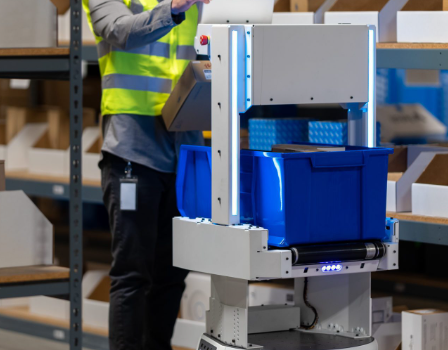
In the logistics world, warehouses are the heartbeat of supply chains—managing storage, movement, and distribution of goods. As demands for speed, accuracy, and cost-efficiency grow, many operations are turning to mobile robots to transform their workflows. These machines are reshaping how warehouses function, offering a smarter approach to automation and material handling.
Why Mobile Robots Are Gaining Ground in Logistics
Mobile robotic systems bring a wide array of advantages to warehouse operations. Here are some of the most impactful benefits:
- Higher Operational Efficiency: Autonomous robots can independently move goods and materials, streamlining the internal flow and significantly boosting throughput.
- Cost Reduction: By automating labor-intensive tasks, businesses can cut back on manual workforce expenses and allocate resources more effectively.
- Precision and Reliability: These systems excel at performing tasks repeatedly without error, helping to improve accuracy in order fulfillment and inventory handling.
- Safer Work Environments: Robots can operate in conditions that are physically taxing or potentially hazardous for humans, reducing the likelihood of workplace injuries.
- Minimized Material Damage: With their ability to handle items delicately and consistently, mobile robots reduce the wear and tear on goods.
- Better Use of Space: Their maneuverability allows for more strategic use of floor space, helping to optimize layout and increase storage capacity.
- Task Adaptability: One key feature is their flexibility—they can be quickly reconfigured to perform different tasks or support varying workflows.
- Less Downtime: Robots don’t require breaks and can function around the clock, keeping operations moving without interruptions.
- Improved Speed and Throughput: Autonomous systems can travel swiftly and efficiently through warehouse corridors, accelerating overall operations.
- Enhanced Load Handling: They are capable of transporting heavier loads safely, minimizing physical strain on human staff.
- Real-Time Visibility: Many mobile robots are equipped with tracking tools that offer live insights into their location, task progress, and inventory movement.
- Sustainability Benefits: Unlike traditional fuel-powered equipment, electric mobile robots offer a cleaner, more environmentally friendly solution.
- Productivity Gains: By automating repetitive tasks, these robots help reduce operational lags and boost overall productivity metrics.
- Higher Customer Satisfaction: Faster processing, fewer errors, and more consistent deliveries lead to improved service levels and happier customers.
Enhancing Material Handling with Autonomous Systems
Among the different warehouse automation tools, autonomous mobile robots (AMRs) stand out when it comes to managing the transport of goods. Their ability to navigate and perform tasks at multiple points across a warehouse makes them ideal for handling materials in dynamic environments.
Solutions like RB-KAIROS+ are designed for such flexible automation. They take over physically demanding and repetitive jobs—like moving inventory between loading zones and shelving units—allowing human staff to focus on tasks that require decision-making or critical thinking.
Importantly, the rise of robotics doesn’t eliminate the need for human workers. Instead, it redefines their roles. Workers now collaborate with machines, using interfaces to guide and supervise robotic operations. With minimal training, employees can become proficient in managing robotic systems, making this technology both accessible and scalable.
Real-World Impact on Warehouse Productivity
Market data underlines the growing influence of mobile robotics in logistics. According to figures from the International Federation of Robotics:
- Over 49,500 robots were sold for logistics-related tasks in 2021 alone.
- Sales of robots designed for outdoor logistics operations, such as the RB-VOGUI, saw a 26% increase that year.
- The logistics sector is expected to see continued double-digit growth in robot deployment, averaging 40% annually through 2025.
These trends point to a clear conclusion: mobile robotics is not just a passing trend, but a fundamental shift in how warehouses operate. By handling high-volume tasks with speed and precision, mobile robots are enhancing workflow consistency, reducing supply chain errors, and enabling organizations to meet customer demands with greater agility.
As more businesses embrace this transformation, the combination of human intelligence and robotic capability is proving to be the key to building smarter, more resilient warehouse operations.












